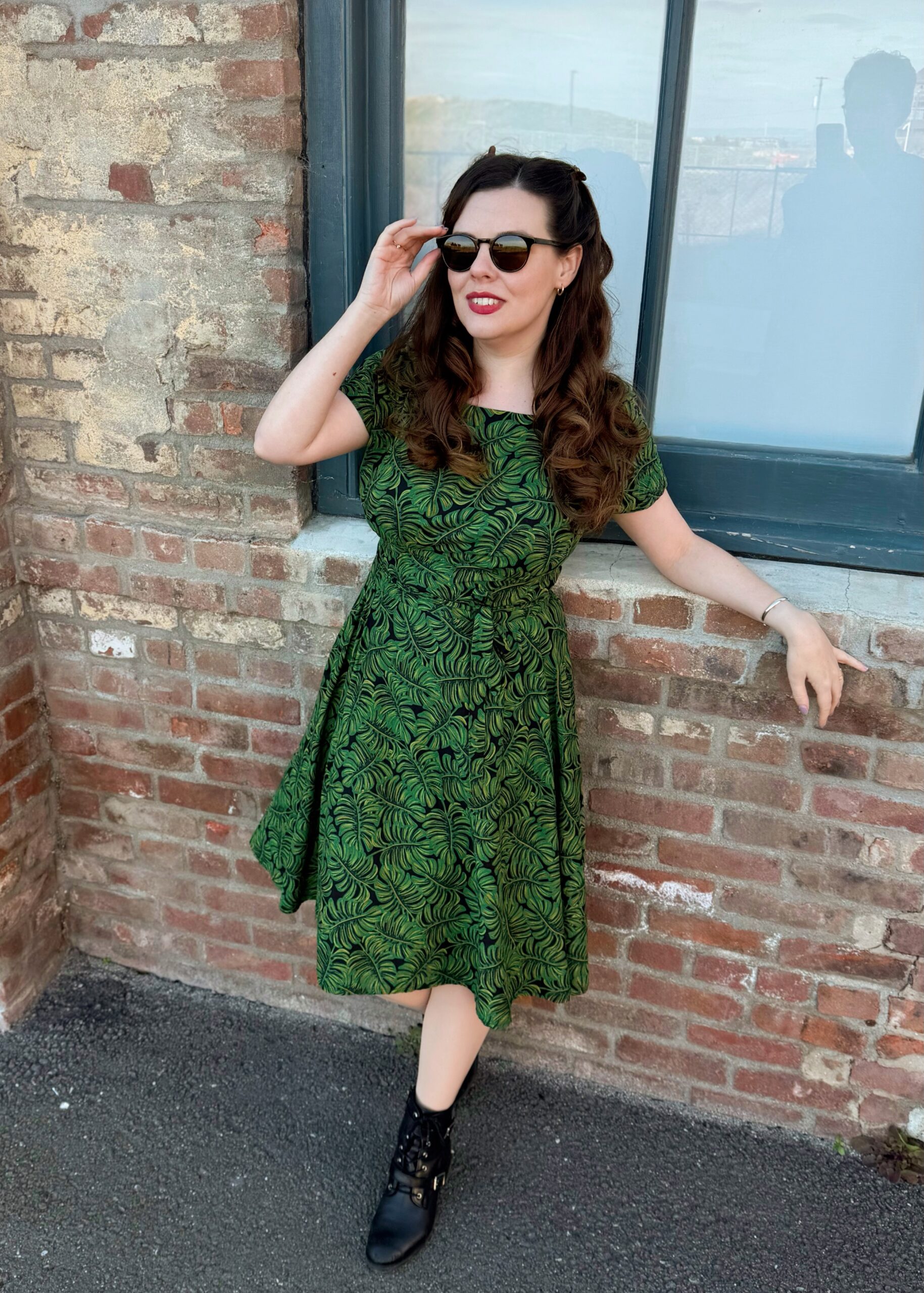
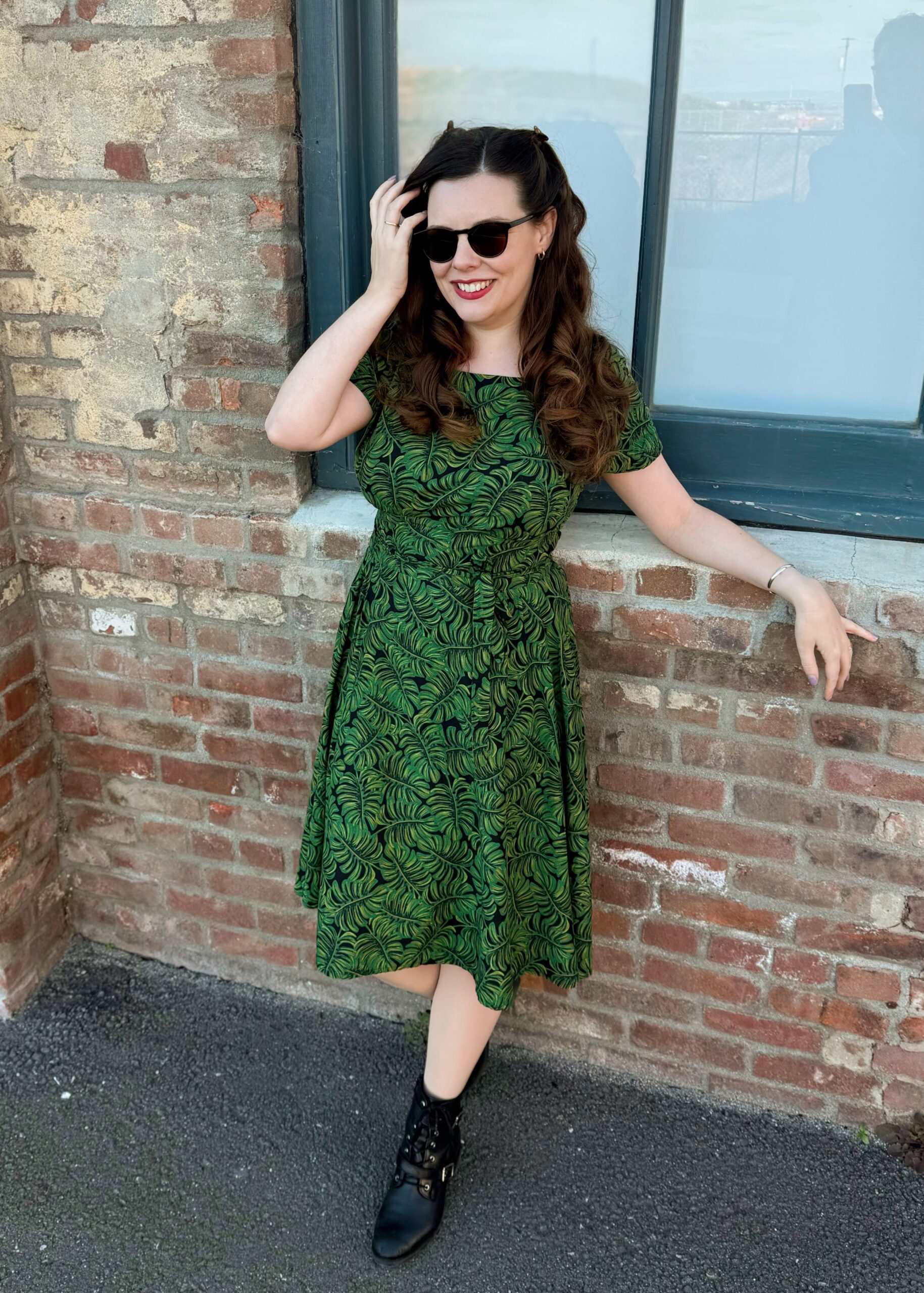

This is a pretty meaningful dress to me, because I made it last year for a very special occasion — modelling for the lovely Sandeep of Sister Mintaka at the Stitch Festival! Another reason this dress is particularly special is that I used a vintage sewing pattern and learnt a new technique during the process, which is always fun. I am so inspired by Martha of Buried Diamond, who makes so many beautiful clothes using vintage patterns, that I now always check every charity shop and thrift shop for potential sewing pattern treasures… and I really feel like this vintage pattern was like finding a pearl! I recently took some photos while out and about in SF, so I am really happy to be able to finally blog about it (side note: the backlog of my finished garments that I need to take pictures for is pretty vast at this point…).
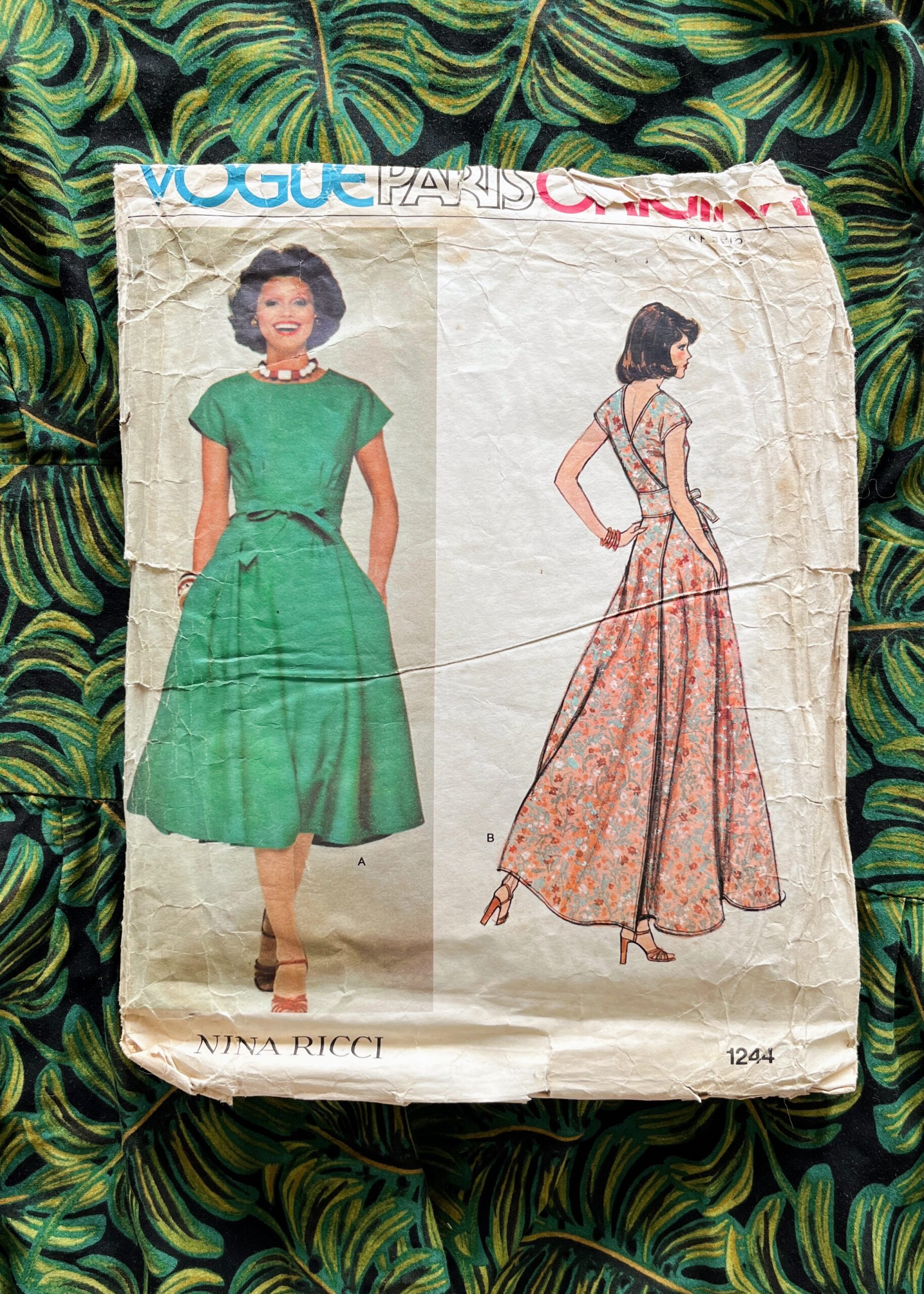
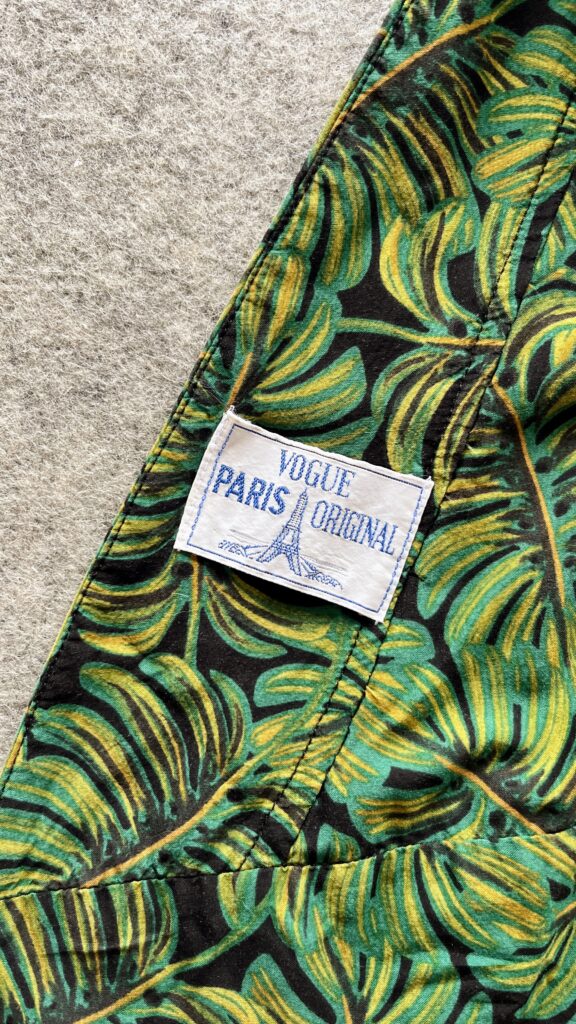
I am pretty sure I picked this vintage pattern up from an Oxfam charity shop back when I was still living in Oxford. Despite the battered, tatty envelope, the pattern was uncut and even had the original vintage label included. This is a Vogue Paris Original from 1975, and it was designed by Nina Ricci. Vintage sewing patterns are usually single-sized and this pattern is a size smaller than I usually make, but I was so enchanted by the details and silhouette of the dress that I bought it anyway!
The pattern has a wide bateau neckline, with grown-on sleeves and a pleated bust for shaping. The inset tie belt creates a wide waistband, and the full circle skirt also has pleating at the waistline and the option of either a skirt that falls just below the knee or a maxi length. As there are no side seams, the pattern includes floating welt pockets to attach to the main body of the skirt. This dress is recommended to be made in soft, lightweight fabrics like silk duponi, crêpes, and challis. My favourite element is the elegant wrap back, I think it looks really pretty.

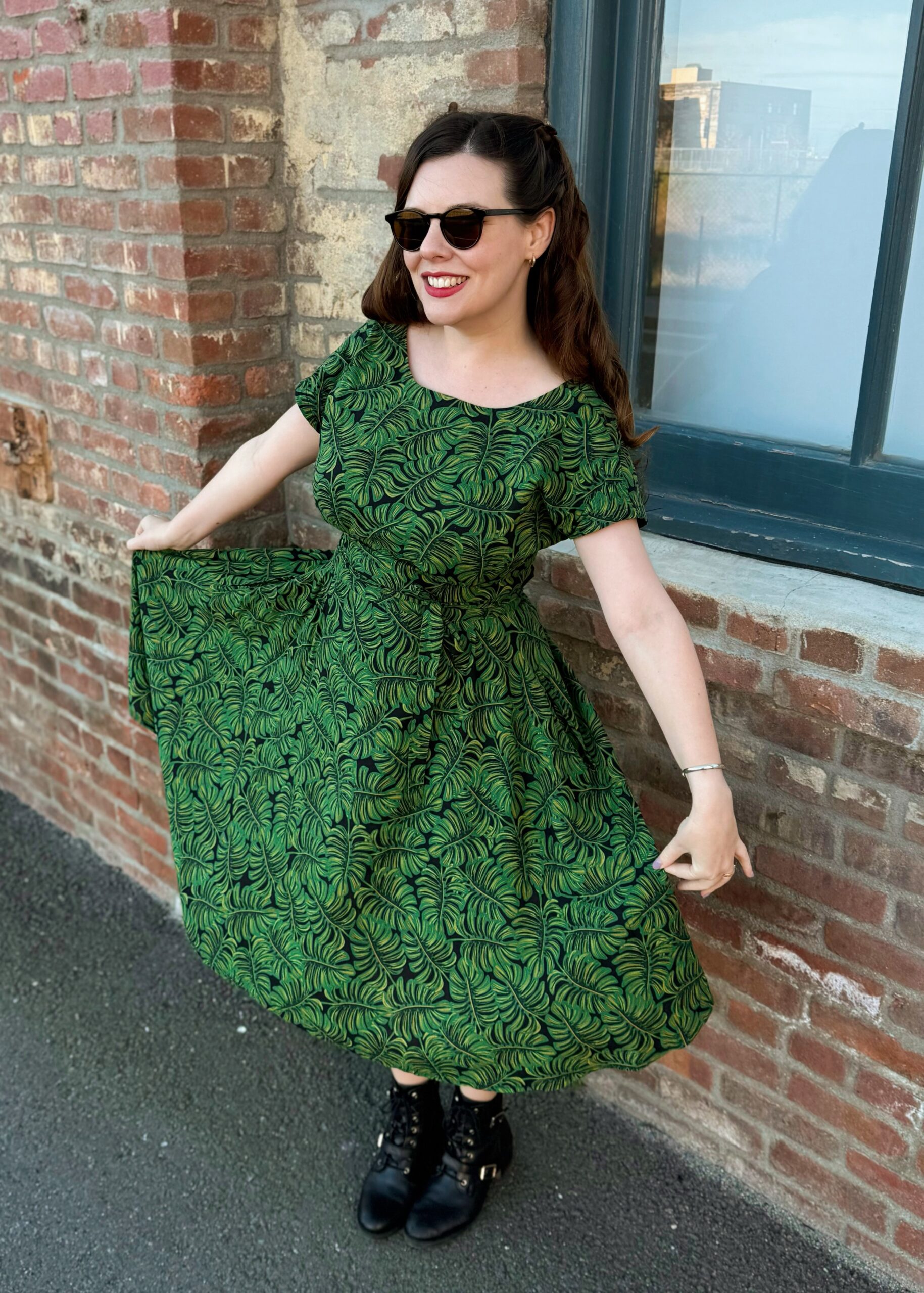
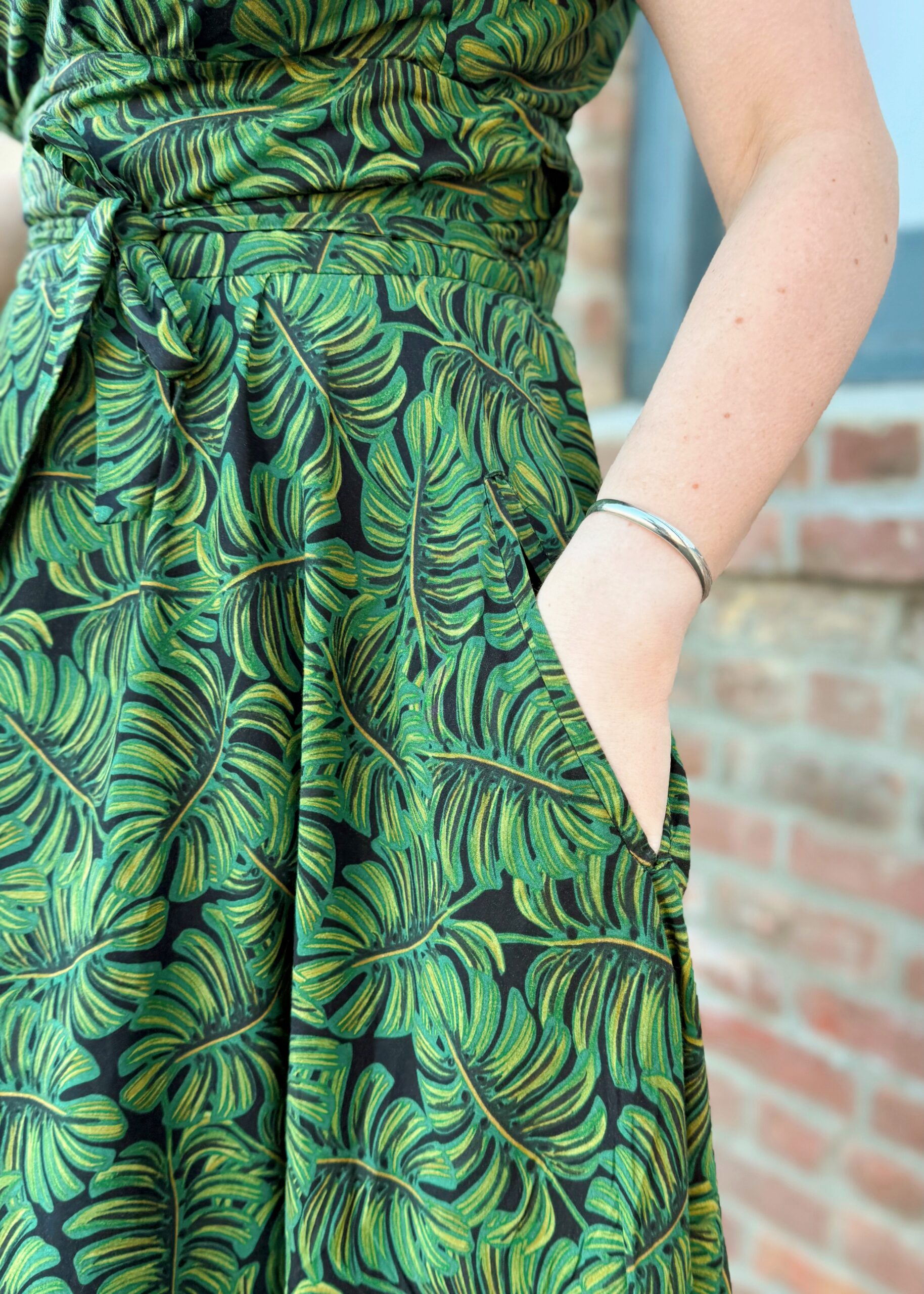
A quick muslin showed that I should grade the pattern up a little to be a more comfortable fit at the waistline, as well as an FBA to get a better fit at the bust. I have the By Hand London Bodice Fitting Companion ebook, which has a really helpful section that explains how to adjust the bust on grown-on sleeve bodices; this FBA meant I needed to add a side bust dart to my bodice. Once I made these changes, I was happy to move on to cutting out my precious fabric.
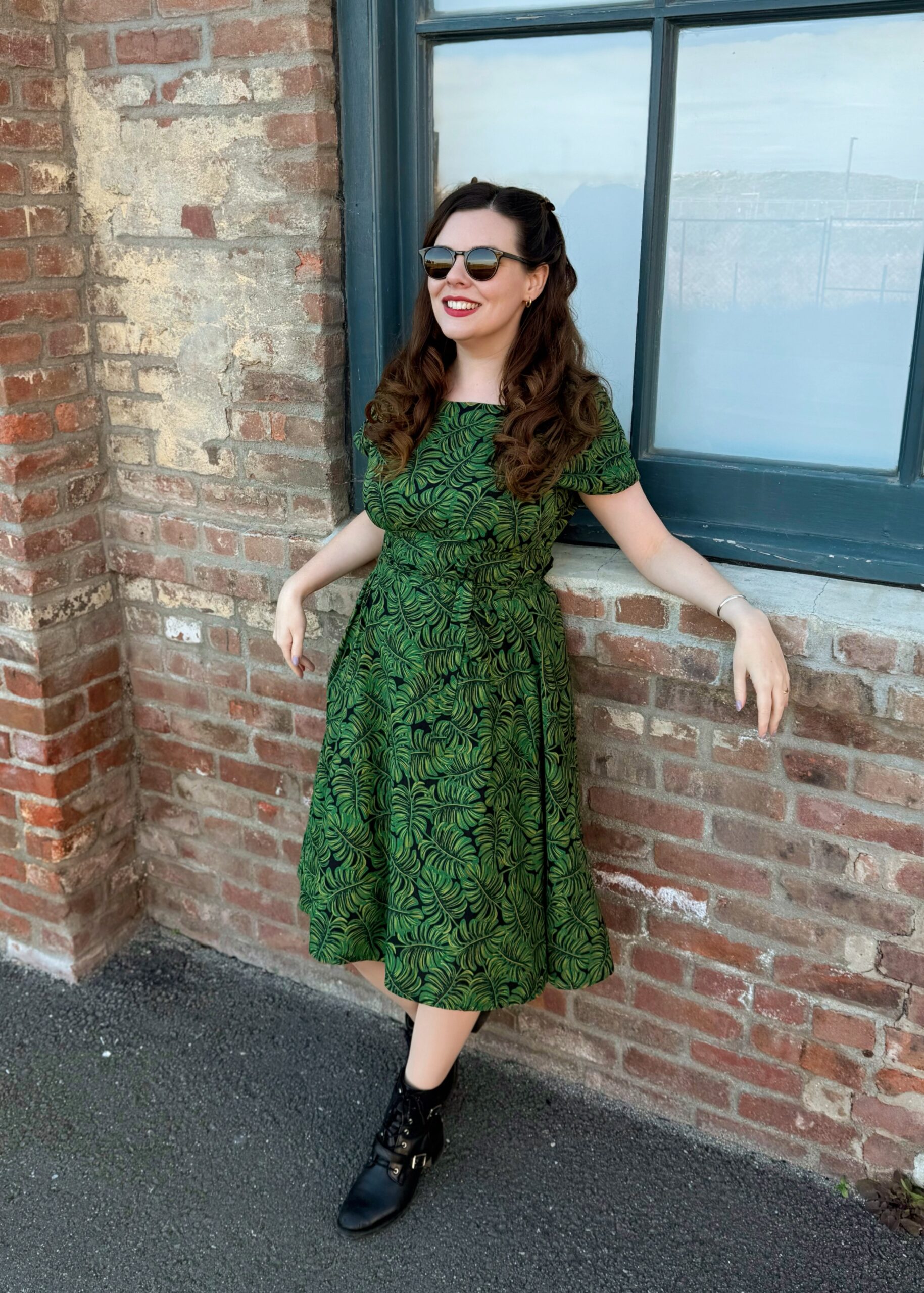
I purchased 4 metres of this fabric from Sister Mintaka, one of my favourite fabric shops based in the UK. It is from the Rifle Paper Co ‘Menagerie’ collection and is a rayon cotton lawn blend (55% cotton, 45% rayon), which makes a particularly pleasant substrate. This fabric has the stability of cotton when cutting and sewing, but also has the drape qualities of a rayon. The bold monstera leaf print really speaks to me — living in a flat in a city means that we have quite a few house plants, including a monstrously out-of-control monstera — and the colours are really vibrant against the black background. As with all Rifle Paper Company fabrics, the bolt was narrow (about 110cm wide) and I used pretty much every last scrap to make this dress.
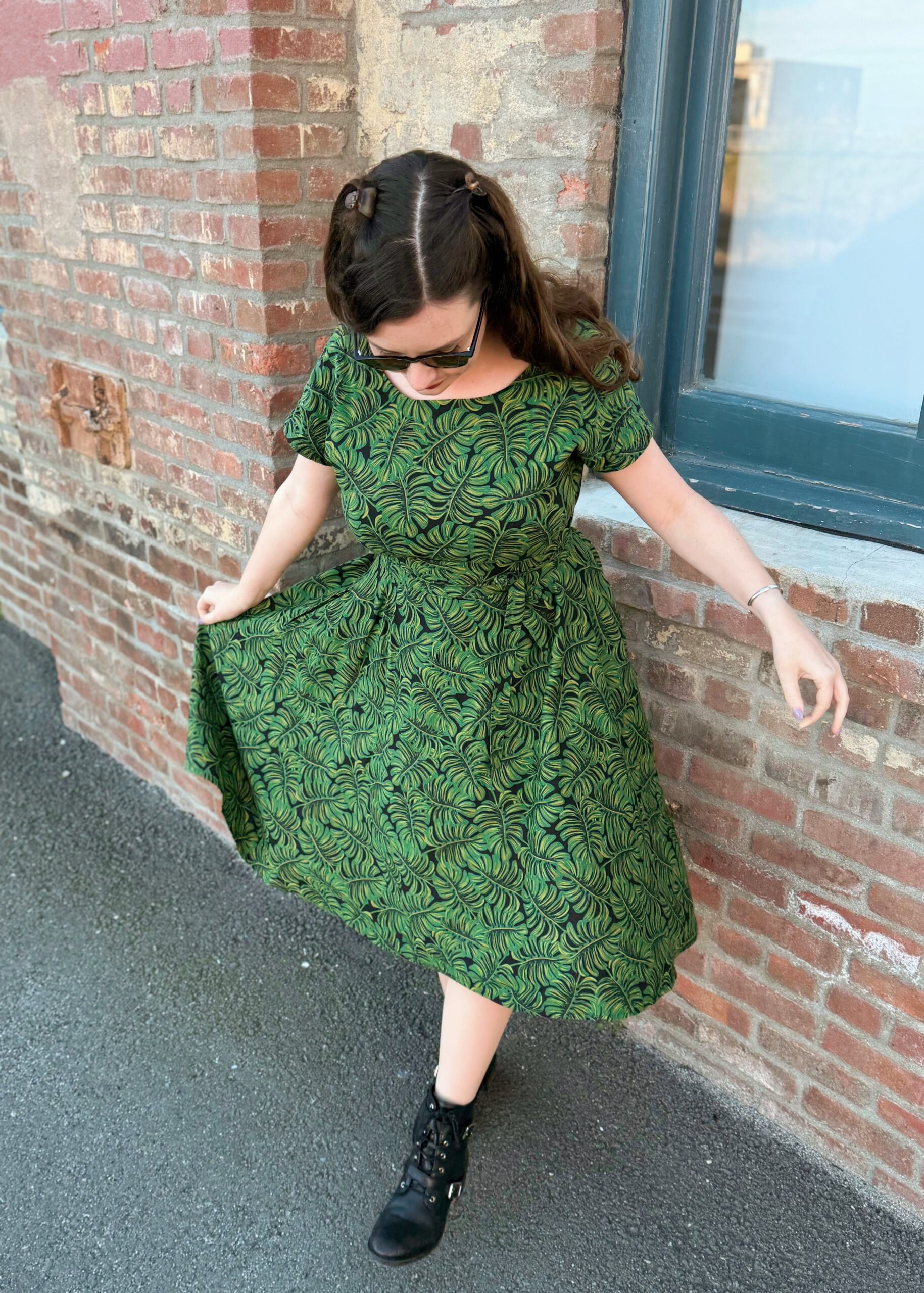
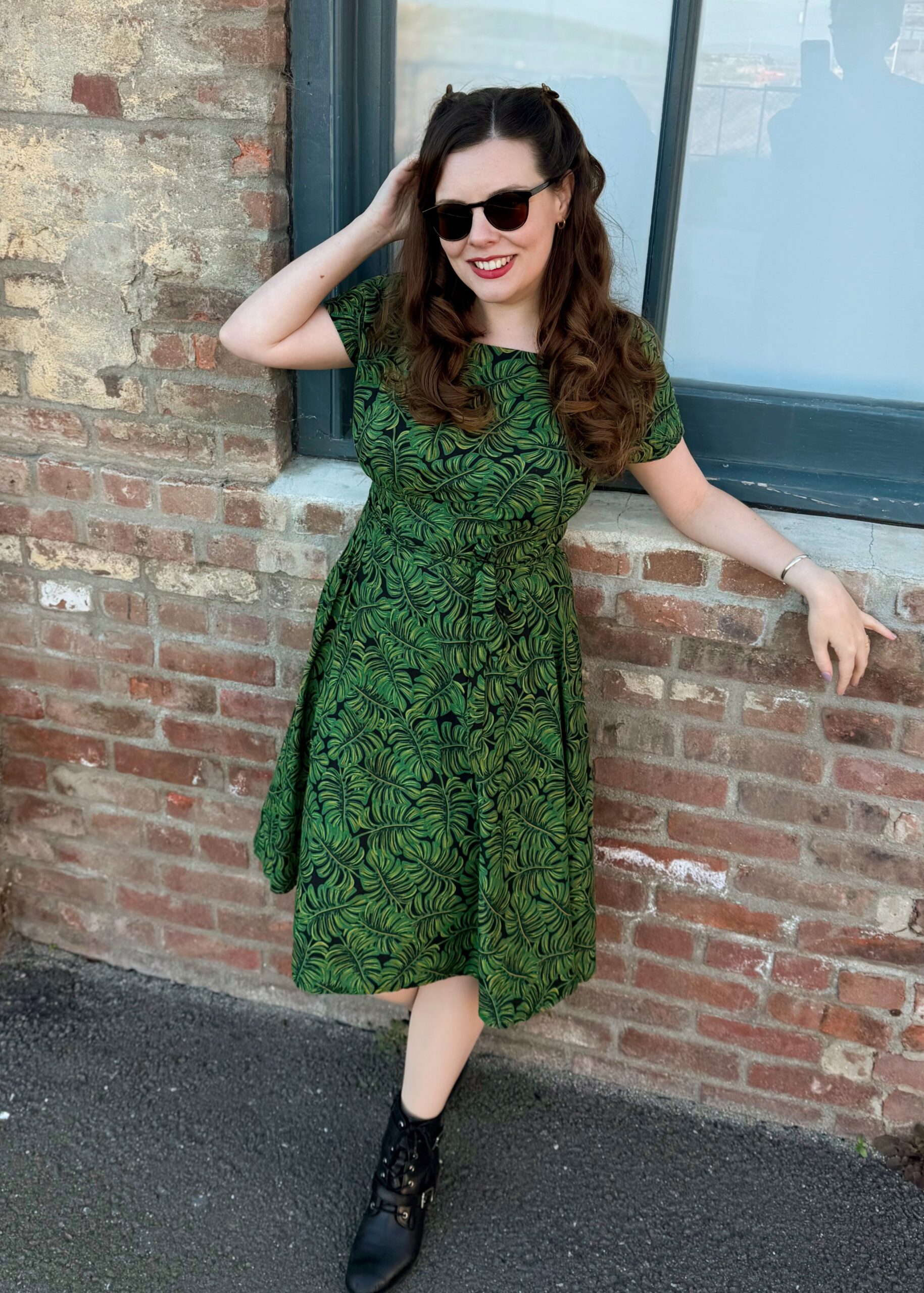
This was a really enjoyable project with a neat, new-to-me technique that I imagine must have been a detail on Nina Ricci RTW dresses during the 70s. I made a couple of changes along the way, starting by interfacing the bodice facings, skirt facing, and the inset belt for long-term stability. I also understitched all my facings, which I do on reflex now. The bodice is underlined with your fashion fabric, so you place the wrong sides facing and baste them together. Going forward, you treat your bodice as one layer for making the pleats and attaching facings, before you blind-stitch the facing to the underlining layer only. This means no visible stitches on your exterior bodice at all and a facing that stays totally in place. This couture technique gives such a clean, secure finish to the dress (especially if you hate facings that tend to flap around!). I imagine it is only possible to do this on light-weight fabrics, as this technique means your bodice is constructed with two layers of fabric plus a layer of interfaced fabric — anything weightier than a poplin and you are going to run into trouble. I also used Hong Kong seams to finish the shoulder seams and bodice sides, as these were the only exposed seams in the garment; everything else is neatly enclosed. Hemming the wrap circle skirt was a chore, but a worthwhile endeavour for the sheer twirliness.
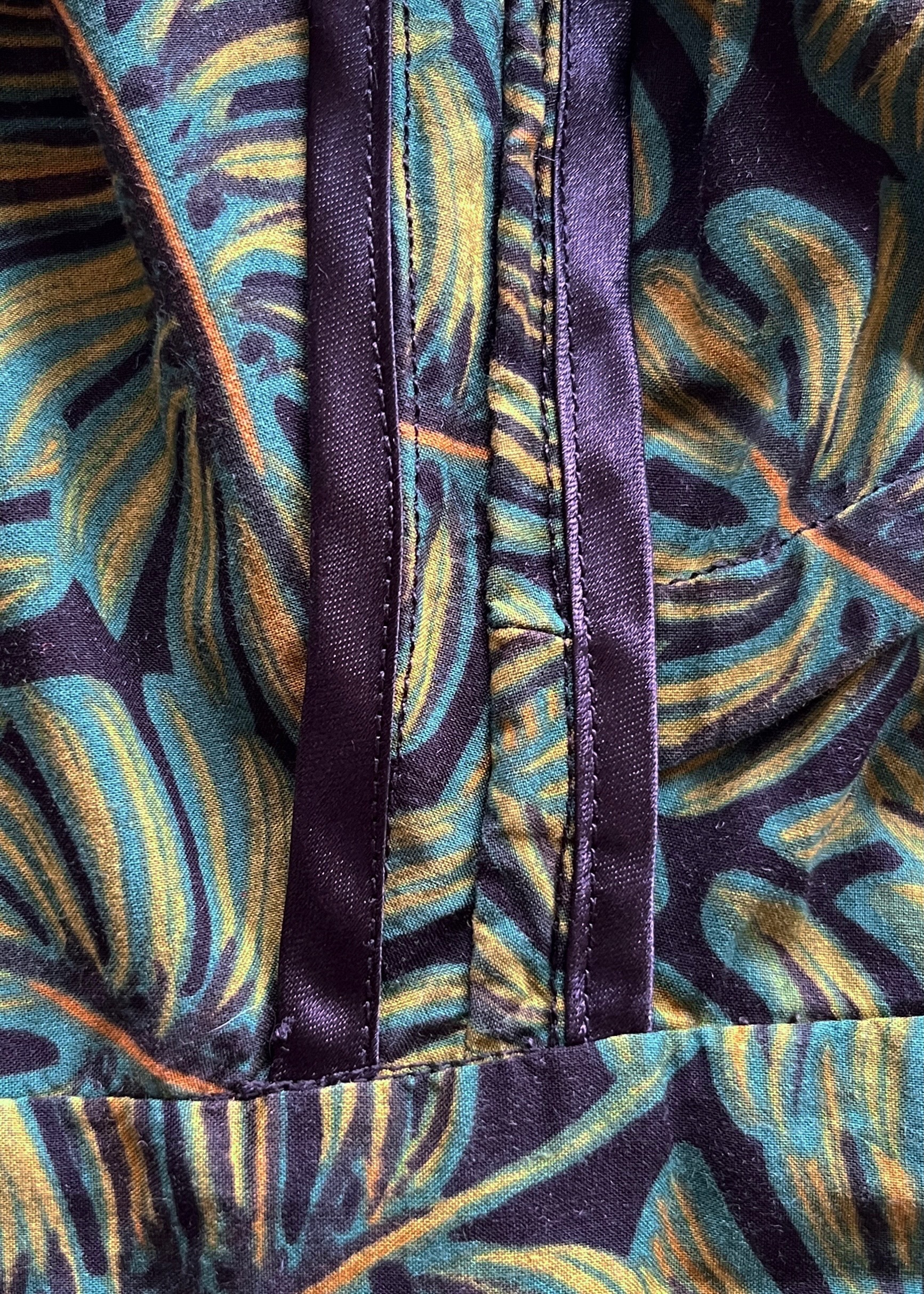
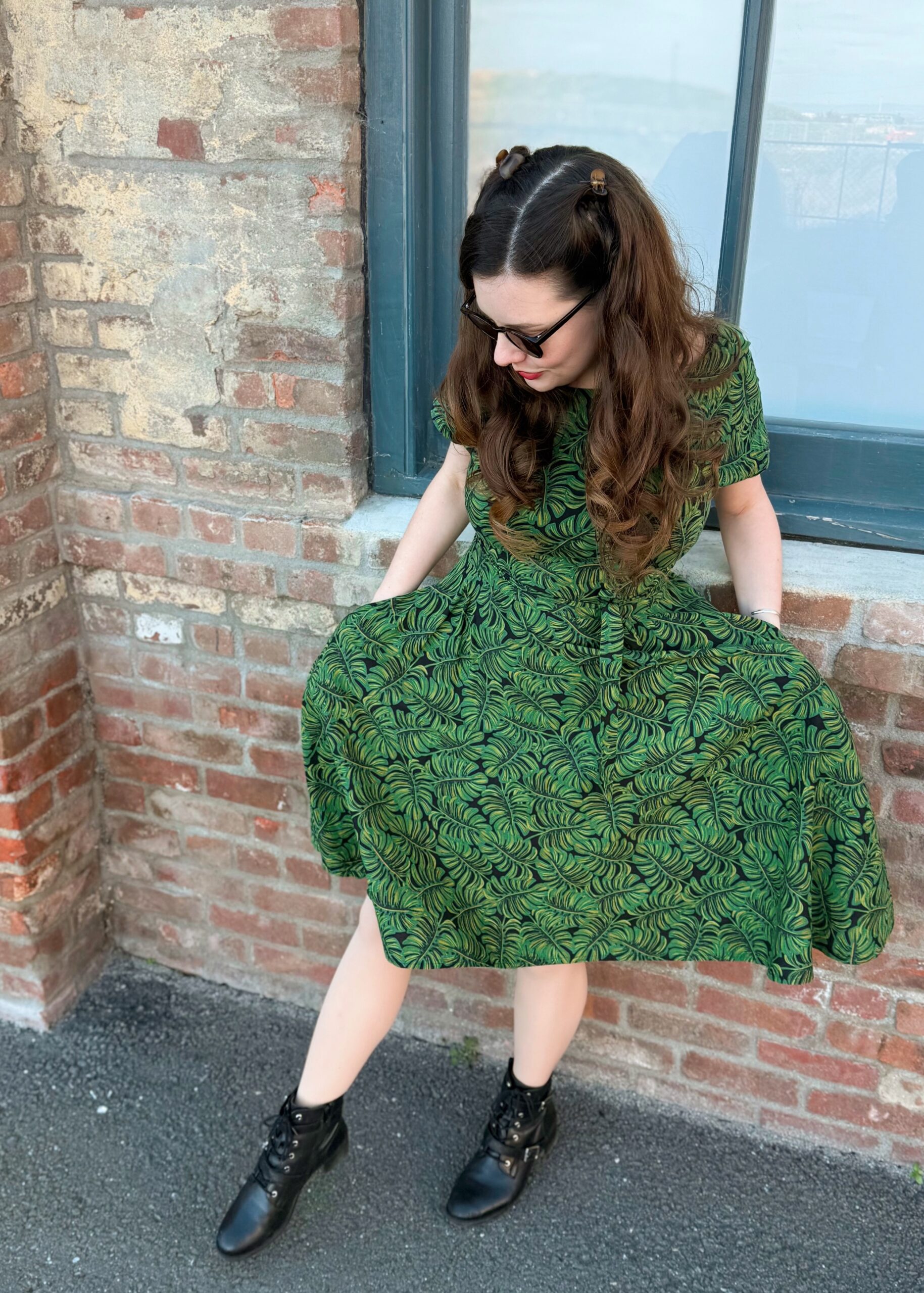
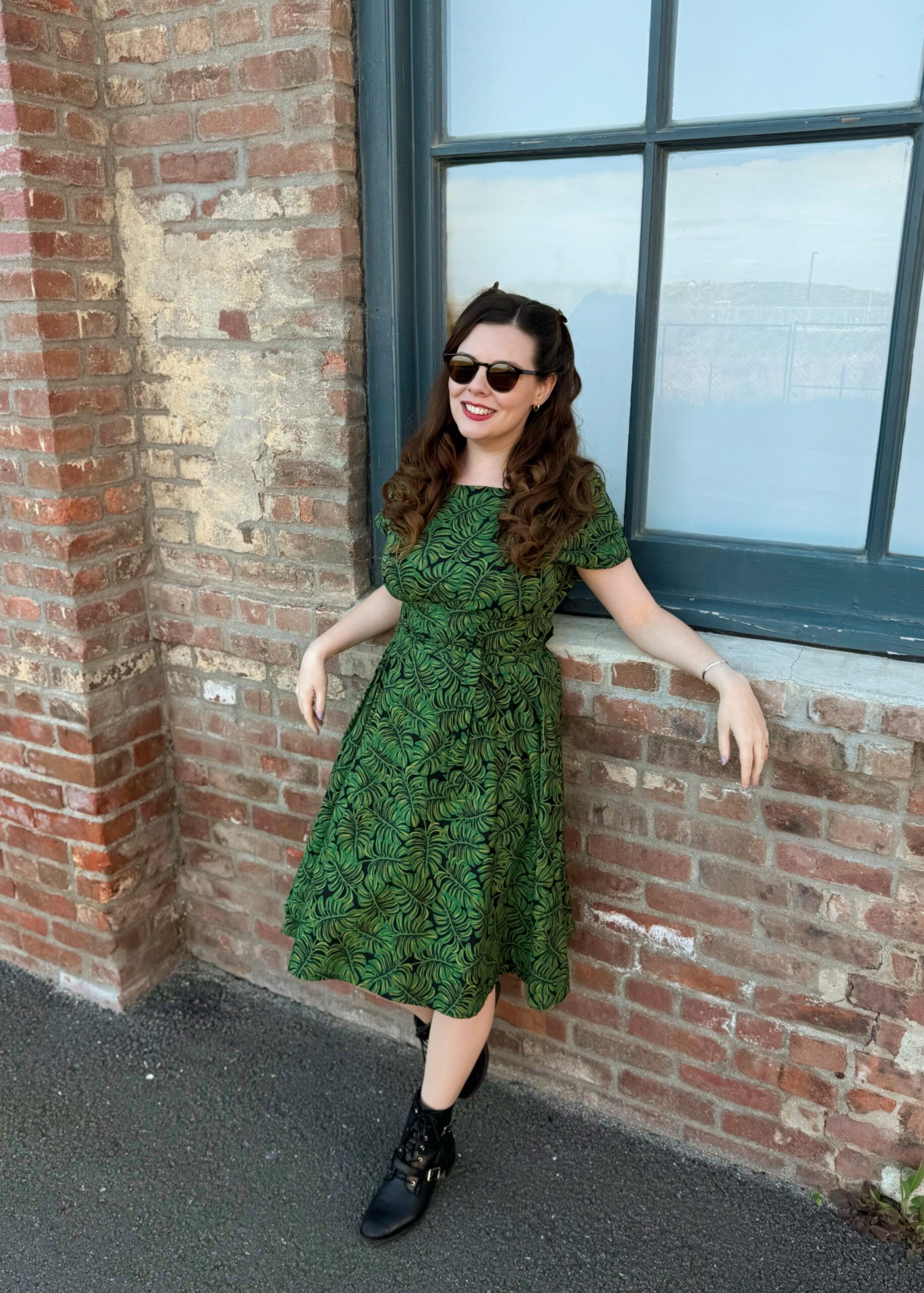
I am so happy with this finished dress and the vintage pattern! There is something almost timeless about the design — it doesn’t read explicitly ‘1970s’ to me, and yet it does have a slight retro look. Plus, it is lovely to wear as it is on warm days and also on cooler days with my leather Canton moto jacket. I am slowly building up a trove of vintage sewing patterns that can be loved in this decade too.
I have tried to think about how to recreate this dress using modern patterns, seeing as vintage patterns have the double whammy of being out-of-print and a very limited size range, so trying to track down the exact pattern that fits can be a challenge. I would probably try and mash together a By Hand London Orsola dress with a circle skirt (so you get the wrap back bodice with the full skirt) and a By Hand London Anna dress (so you get the grown-on sleeves and pleated bust bodice).
I would love to make this dress again, as it was a fun challenge. The only problem is that the pattern requires a significant amount of fabric, so I would need to bear this in mind when I see something that could work! I imagine a maroon satin-back crêpe would look lovely and luxurious for an autumn maxi dress.



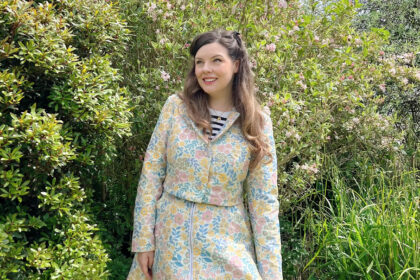
That is a beautiful dress and a very cool pattern. I can’t believe it even still had the label! I agree with you about Martha Moore, too. Drawing on her for inspiration has taken me in some very fun sewing directions.
Thank you so much! I feel so lucky the original label was still in the envelope 💕